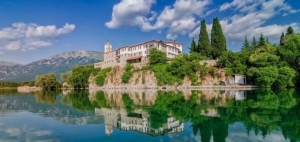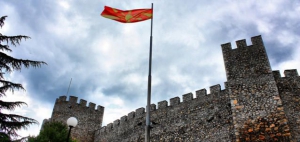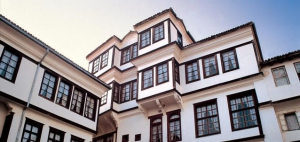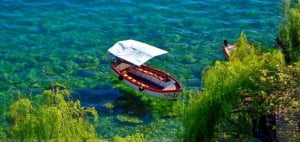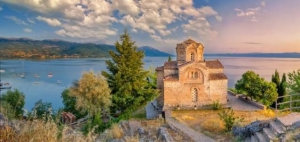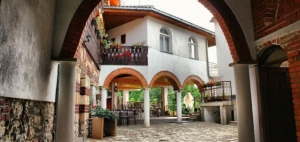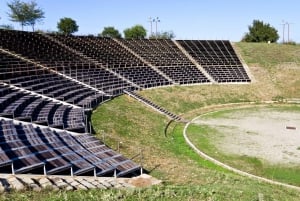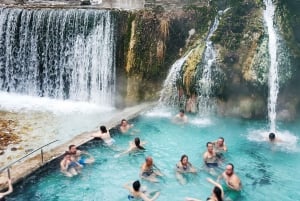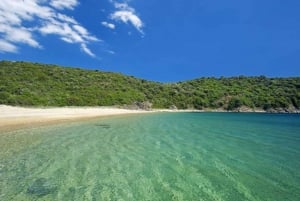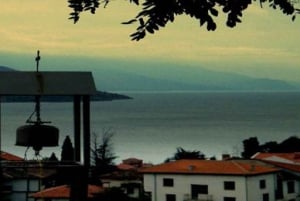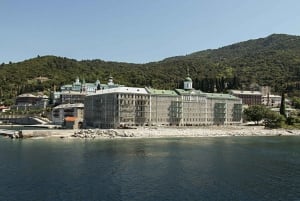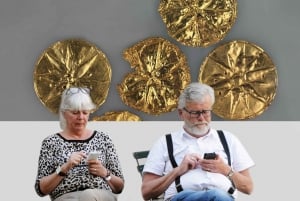Ohrid
Ohrid is by many considered to be the Balkan Jerusalem, and rightly so as the city is one of the oldest with profoundly rich culture and huge significance for the development of the Macedonian nation and religion. The epithets for Ohrid do not stop at a Balkan Jerusalem and similar terms that are based on its cultural heritage but also terms like the Balkan Pearl which try to capture its beauty. Situated on the coast of the ancient lake that bears the same name it is the only area protected and enlisted as a UNESCO World Heritage Site in Macedonia. Although statistically it is the second city visited by tourists in Macedonia, behind Skopje the Capital, its role and significance for Macedonian tourism is unrivalled.
General information
Ohrid is a relatively small city of around 60.000 people however during the summer this number can well exceed a 100.000 over any month so if you are arriving with a car expect difficulties finding a parking space in the city centre. Visitors here will experience a wonderful climate during the summer as the city and lake are situated 700 meters above sea level. This means that the average temperature in August is around 28 degrees Celsius (whilst in the warmest city, Gevgelija it stands at 34°C) which combined with the fresh and cool water of the lake provide the perfect getaway from the scorching heat.
Ancient times
Legend says the city was first founded by the Phoenician Cadmus who when abdicated from his throne moved to the surrounding areas of Lake Ohrid and founded the city of Lychindos which translated means "City of Light". First true records can be found from as early as 4th century BC as the city then belonged to the empire of King Phillip II of Macedon. Lychindos has always been an important strategic location, as proven by the conquering of the Romans around 100 BC, when it became a part of the famous Via Egnatia road which ran from the most eastern side of the Balkans through Lychindos and Salonica to finally end at mighty Constantinopole.
Christianity
Christianity has been present in Ohrid for almost two millennia as the city is also dubbed the gate for Christianity in Europe. The first Christian church was built by St. Erasmus in the 3rd century AD making it one of the earliest churches in Europe. Nowadays it is said that there are 365 churches along the coastline of the lake, each from a different era, each with its own story.
Medieval
The first time the word Ohrid was used was in the 9th century and the word comes from the Slavic words "vo hrid" which means "on a hill" as the old city is built on a hill. During this period Ohrid became an educational hub with followers St. Clement and St. Naum of even greats Ss. Cyril and Methodius came back to Ohrid to found Ohrid Literary School. The church St. Panteleimon which was built under the care of St. Naum and can still be seen at Plaoshnik produced 3500 students. Medieval Ohrid also saw the rise and fall of one of the great kingdoms in the Balkans, the one of King Samuil. His kingdom stretched from the waters of the Adriatic Sea on the west to the Black Sea on the east, but ended infamously by the massacre of his 15.000 strong army by the hands of Byzantine emperor Basil II. Eventually Ohrid as the rest of Macedonian territory fell under Ottoman rule from the 14th century until 1913.
Recent History
Interchangeably between the Balkan Wars and World War II Ohrid fell under Serbian and Bulgarian rule and was finally freed on November 7th 1944. Since then Ohrid has lived up to its history by becoming an important centre for Macedonian culture, religion and education.
The Top Five
1. Samuil's Fortress was the stronghold of King Samuil's empire and to this day still remains the most dominant structure in Ohrid. It provides great views of the city and the lake in addition to having a great historical importance.
2. Plaoshnik is an archeological site just below the fortress and is the home of the Church of St. Panteleimon which was built during the period of St.Clement. The interior of the church is astonishing and will leave you breathless.
3. St. John at Kaneo Church is the most iconic landmark in Ohrid situated on a rock just above the lake. Its beauty and location are synonymous with the town's history with a fresco of St. Clement and St. Erasmus painted on the walls.
4. Church of St. Sophia was built to be the main church of the Archbishopric of Ohrid and is one of the best examples of medieval art. It was built with amazing acoustics so make sure you check out our events page in case there is a concert taking place here.
5. Robevci House or the National Museum is the best example of traditional Ohrid and Macedonian Architecture. Once it belonged to affluent Ohrid family Robevci, now it is a museum that has on display artifacts from all periods of Ohrid's History.
If we were to continue with the sights and attractions in Ohrid unfortunately we would run out of space, so please have a look at the remaining sights which are no less extraordinary:
The Early Christian Basilica Memorial House of Grigor Prlicev Church of Ss. Cosmas and Damian
Church of Holy Mother Bolnichka Church of Ss. Constantine and Helena The Ancient Theatre
Church of Holy Mother of God Chelnichka The Central Square Ali Pasha Mosque
The Icon Gallery The Biljanini Springs National Park Galicica
Cave Church of St. Stefan Church of St. Nicholas Bolnichki Church of St. Varvara
Church of Mother of God Perivleptos Monastery of St. Naum Bay of Bones Museum
Trpejca Village
Here is CNN's view on Ohrid.


